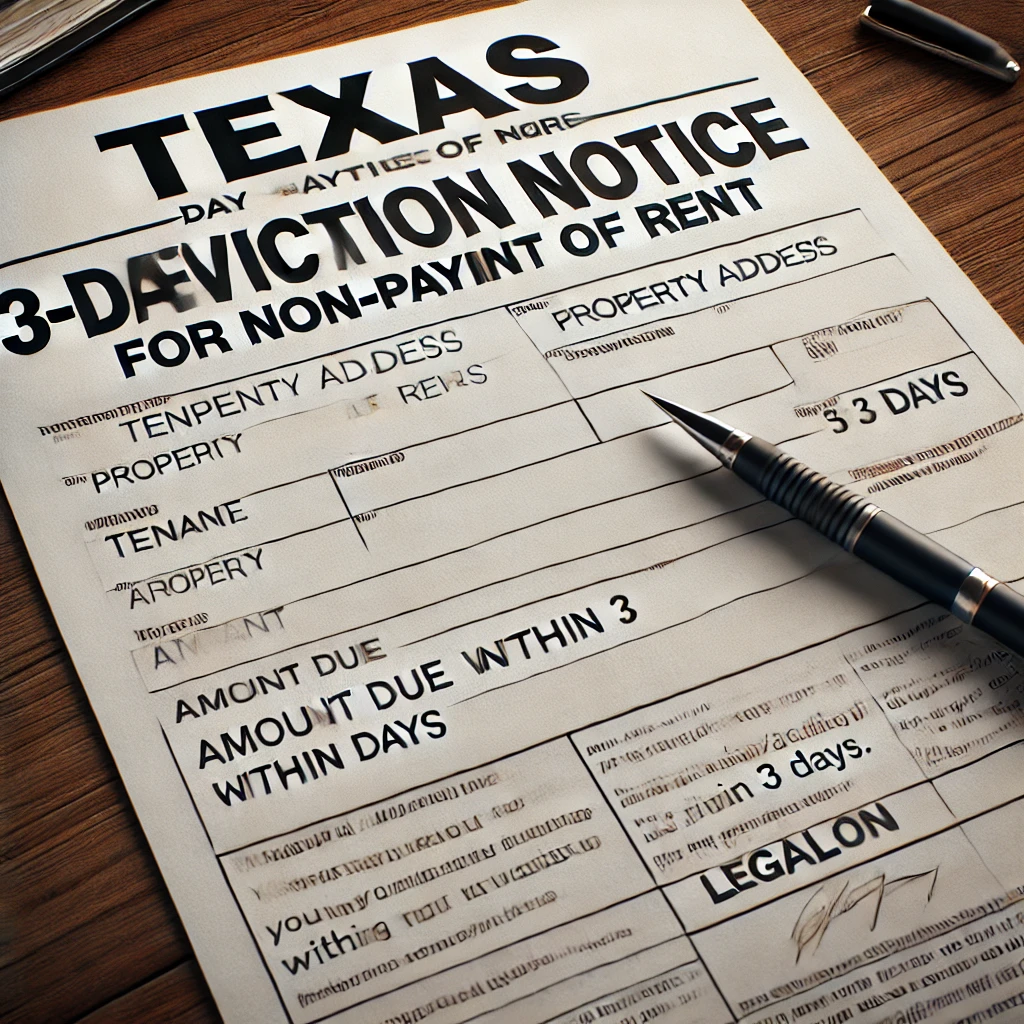Introduction
If you’re a landlord in Dallas dealing with a non-paying tenant, you’re not alone. Texas law gives landlords the legal tools to remove tenants who break the lease — but the eviction process must be done by the book to avoid delays or legal issues.
In this guide, we’ll walk you through the Dallas eviction process, step-by-step, including timelines, forms, court procedures, and what to expect at each stage.
Step 1: Confirm Lease Violation or Non-Payment
Before you begin the eviction process, confirm that your tenant has violated the lease — most commonly by not paying rent. Texas law allows landlords to begin eviction if the tenant:
Has not paid rent on time
Violates lease terms (like subletting or damaging property)
Refuses to vacate after lease ends
📝 Tip: Document everything. Save written notices, texts, and rent ledgers.
Step 2: Deliver a 3-Day Notice to Vacate
Texas requires landlords to give tenants a 3-day notice to vacate before filing for eviction.
What the Notice Must Include:
Tenant name(s)
Property address
Reason for eviction (e.g. non-payment)
Deadline to move out (typically 3 days from delivery)
Your contact info
📌 You can post the notice on the door, hand-deliver it, or send it via certified mail.

Step 3: File the Eviction Case at the Justice Court
f the tenant doesn’t move out after the notice period, your next step is to file an eviction case in the Dallas County Justice of the Peace (JP) Court.
You’ll need:
Copy of the lease
Proof of notice to vacate
Filing fee (around $54–$141 depending on court)
📍 Find your precinct here: Dallas County JP Courts
Step 4: Attend the Eviction Hearing
Once filed, the court will set a hearing within 10–21 days. Both you and the tenant will present your sides.
✅ Landlord Tip: Bring copies of:
Lease agreement
Payment history
Photos of damages (if applicable)
The 3-day notice
If the judge rules in your favor, the tenant has 5 calendar days to appeal or vacate.
Step 5: Request a Writ of Possession
If the tenant still refuses to leave after the judgment, you’ll need to request a writ of possession. This allows the constable to physically remove the tenant.
The constable will serve a 24-hour warning
After that, they can forcibly remove the tenant and belongings

Common Mistakes That Can Delay the Eviction
Serving the wrong notice or using the wrong dates
Filing in the wrong precinct
Accepting partial rent during the process
Not showing up with proper documents in court
❌ Avoid DIY eviction mistakes — they cost you more time and money in the long run.
Need Help with an Eviction in Dallas?
Evicting a tenant in Dallas isn’t just paperwork — it’s a legal process that must be followed precisely. At NTX Eviction Services, we help Dallas landlords file, represent, and enforce evictions from notice to possession.
👉 Let us handle the paperwork and court appearances — so you don’t have to.

Final Thoughts
Evicting someone in Dallas is never easy, but following the legal process ensures you avoid delays and liability. Whether it’s a non-paying tenant or lease violation, the sooner you act, the better your chances of recovering your property.
Need a fast and legal eviction? NTX Eviction Services has your back.

